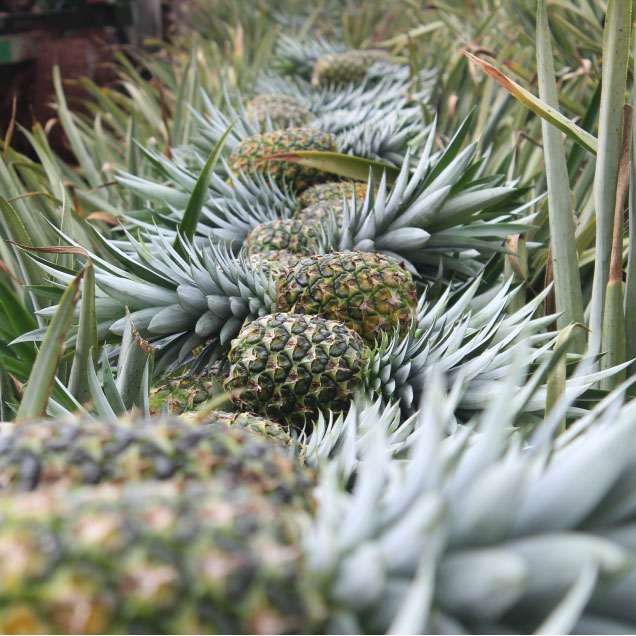
The MD-2 hybrid is the variety of organic pineapple grown at Bio-Sogo. No genetically modified organisms can be used in farming certified organic pineapples, or any other organic crop.
The Bio-Sogo pineapple is incredibly sweet, filled with delicious fruit juices and fragrances. Its texture is smooth, and you can plant the crown to display it in your home as an ornamental fruit.
The process from plant to harvest is 14 months but we offer pineapple every week, year-round.
Pineapple is a tropical fruit native to South America and is the main edible species of the bromeliad family. Pineapples are of the most typical fruits found in the tropics.
In growing Bio-Sogo’s certified organic pineapple, the MD-2 hybrid, no genetically modified organisms used nor is this variety genetically modified in any way.
Bio-Sogo pineapple is incredibly sweet and filled with delicious fruit juices and fragrances. Its texture is smooth and you can plant the crown to display it in your home as an ornamental fruit.
Pineapple is a very fragile fruit and sensitive to sudden changes in temperature, so care must be taken to store pineapples in a cool, dry place for a few days. Although pineapples should never be stored in the refrigerator, once they are cut and peeled, they can be wrapped and kept it in the refrigerator. They should be eaten as soon as possible.
| Sizes | Weight (kg) | Estimated Distribution in box |
|---|---|---|
| 5" | 2,1 kg - 2,4 kg | 1% |
| 6" | 1,8 kg - 2,1 kg | 4% |
| 7" | 1,5 kg - 1,8 kg | 21% |
| 8" | 1,4 kg - 1,5 kg | 38% |
| 9" | 1,25 kg - 1,4 kg | 20% |
| 10" | 1,1 kg - 1,25 kg | 11% |
| 11" | 0,9 kg - 1,1 kg | 5% |
The process of pineapple cultivation begins with the selection of suitable soil, which should not be too wet. The soil is prepared and is harrowed 4 to 5 times and subsoiled twice. Then we proceed to the bedding, preparation and cleaning of the rainwater drainage channels, and the layout of the rows. Once the land is ready, the soil is sanitized to eliminate pathogenic microorganisms by applying Trichoderma, a type of fungi. Once the land is ready for planting, the plastic mulch is placed, the seed (previously selected) is transported, and planting is carried out. During the following 9-10 months, applications are made to give the adequate development to the plantation. In addition, pest and disease sampling is carried out to determine if phytosanitary applications are necessary. When it is considered prudent, a sampling of the average weight of the plantation (plant weight) is taken. If the plant has reached a minimum average weight of 5.25 lbs., it proceeds to flower induction.
From this moment on, the fruit begins to develop. Natural fertilizers are applied to develop the fruit and biological-based pest control products are applied to protect it. After about five months, the quality of the fruit is evaluated, samples are taken, brix and translucency are checked, and a decision is made as to whether it can be harvested.
The fruit is harvested manually with the help of a harvesting machine and placed in bins or boxes for transport to the plant.